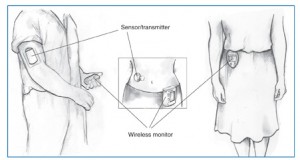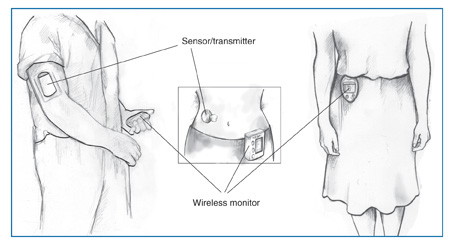The Endocrine Society issued a Clinical Practice Guideline recommending continuous glucose monitors (CGMs) as the gold standard of care for adults with Type 1 diabetes.

The Endocrine Society’s Clinical Practice Guideline, titled “Diabetes Technology–Continuous Subcutaneous Insulin Infusion Therapy and Continuous Glucose Monitoring in Adults: An Endocrine Society Clinical Practice Guideline,” was published online and will appear in the November 2016 print issue of The Journal of Clinical Endocrinology & Metabolism (JCEM), a publication of the Endocrine Society.
An estimated 29 million Americans have diabetes, according to the Society’s Endocrine Facts and Figures Report. The condition occurs when the body’s ability to process sugar is impaired. Among individuals with Type 2 diabetes, the body either makes too little insulin, the hormone that processes sugar, or the body uses insulin inefficiently. An individual develops Type 1 diabetes–the less common form of the condition–when the body produces little to no insulin.
Continuous glucose monitors (CGMs) are primarily used to help in the management of Type 1 diabetes, although the devices can be useful for people with type 2 diabetes, as well. CGMs measure glucose levels in the fluid between the body’s cells every few minutes throughout the day and night. The technology can tell the user whether glucose levels are rising or falling, and monitor trends from the past several hours. The devices also feature alarms to warn users when glucose levels are too high or too low.
“Studies have found that people with Type 1 diabetes who use CGMs are able to maintain better control of their blood sugar without increasing episodes of hypoglycemia when blood sugar drops to dangerous levels, compared to those who self-monitor blood glucose with periodic fingersticks,” said Anne L. Peters, MD, of the University of Southern California’s Keck School of Medicine in Los Angeles, CA, and chair of thf Oregon Health and Science University in Portland, OR; Tadej Battelino of the University of Ljubljana and University Children’s Hospital in Ljubljana, Slovenia; Alison Evert and Irl B. Hirsch of the University of Washington Medical Center in Seattle, WA; M. Hassan Murad of the Mayo Clinic Evidence-based Practice Center in Rochester, MN; William E. Winter of the University of Florida in Gainesville, FL; and Howard Wolpert of the Joslin Diabetes Center and Harvard Medical School in Boston, MA.
Continue Reading Below ↓↓↓
The Society established the Clinical Practice Guidelines Program to provide endocrinologists and other clinicians with evidence-based recommendations in the diagnosis and treatment of endocrine-related conditions. Each guideline is created by a task force of topic-related experts in the field. Task forces rely on evidence-based reviews of the literature in the development of guideline recommendations. The Endocrine Society does not solicit or accept corporate support for its Clinical Practice Guidelines. All guidelines are supported entirely by Society funds.
The guideline was co-sponsored by the American Association for Clinical Chemistry, the American Association of Diabetes Educators and the European Society of Endocrinology.
Source: The Endocrine Society
Journal Article: Journal of Clinical Endocrinology & Metabolism
Funder: Endocrine Society











Actually, I have tried using a CGM but found it more time intensive! The waiting for two hours after inserting the catheter of the sensor to calibrate it. Then, I found it to be annoying when the alarm would go off at inappropriate times. I realize that I should turn the alarm off when I was in front of people who would be also annoyed, but then why even have it if you have to turn the alarm off? I am not using it now (even though I should) but I cannot with what I’ve experienced.